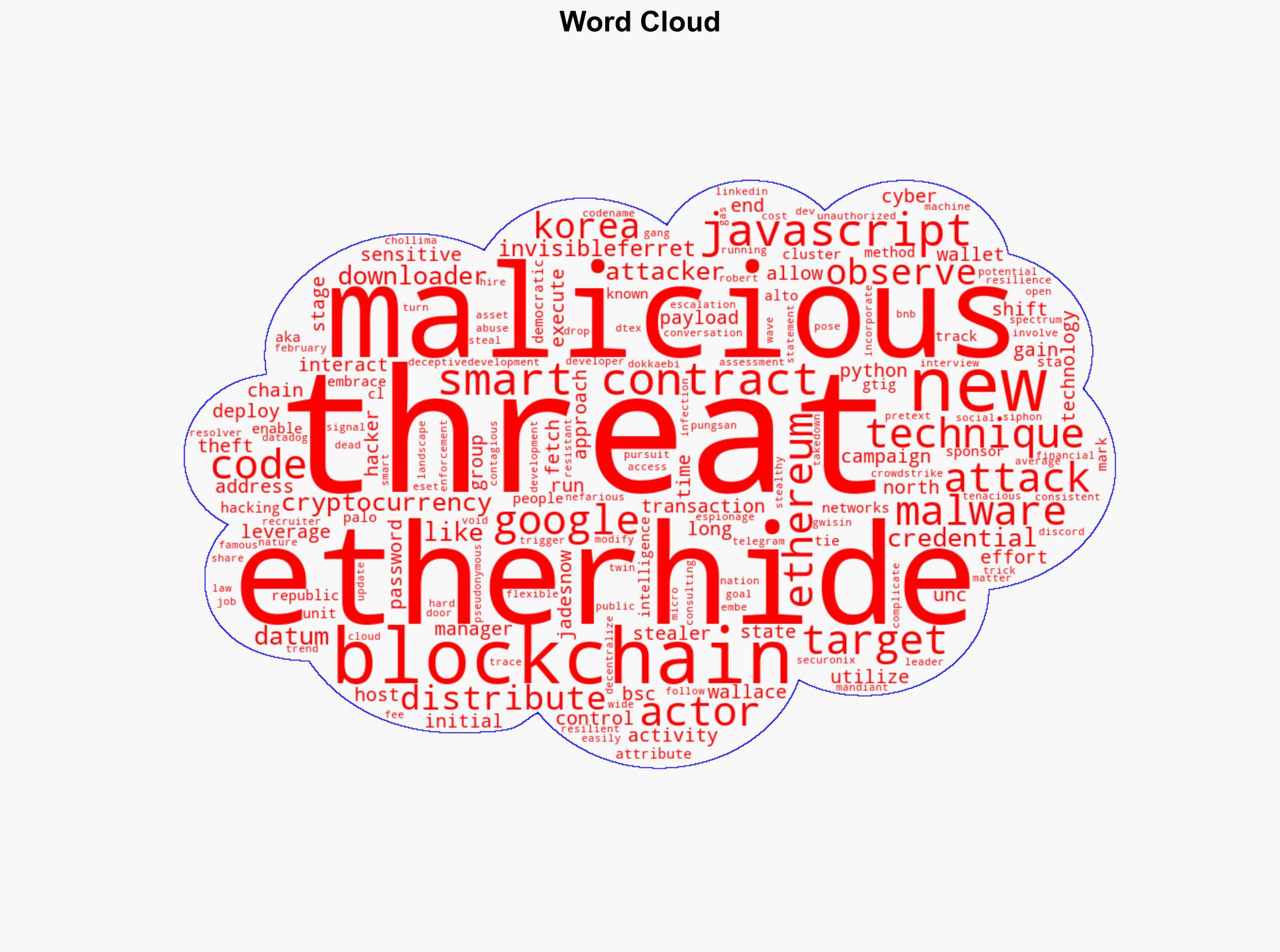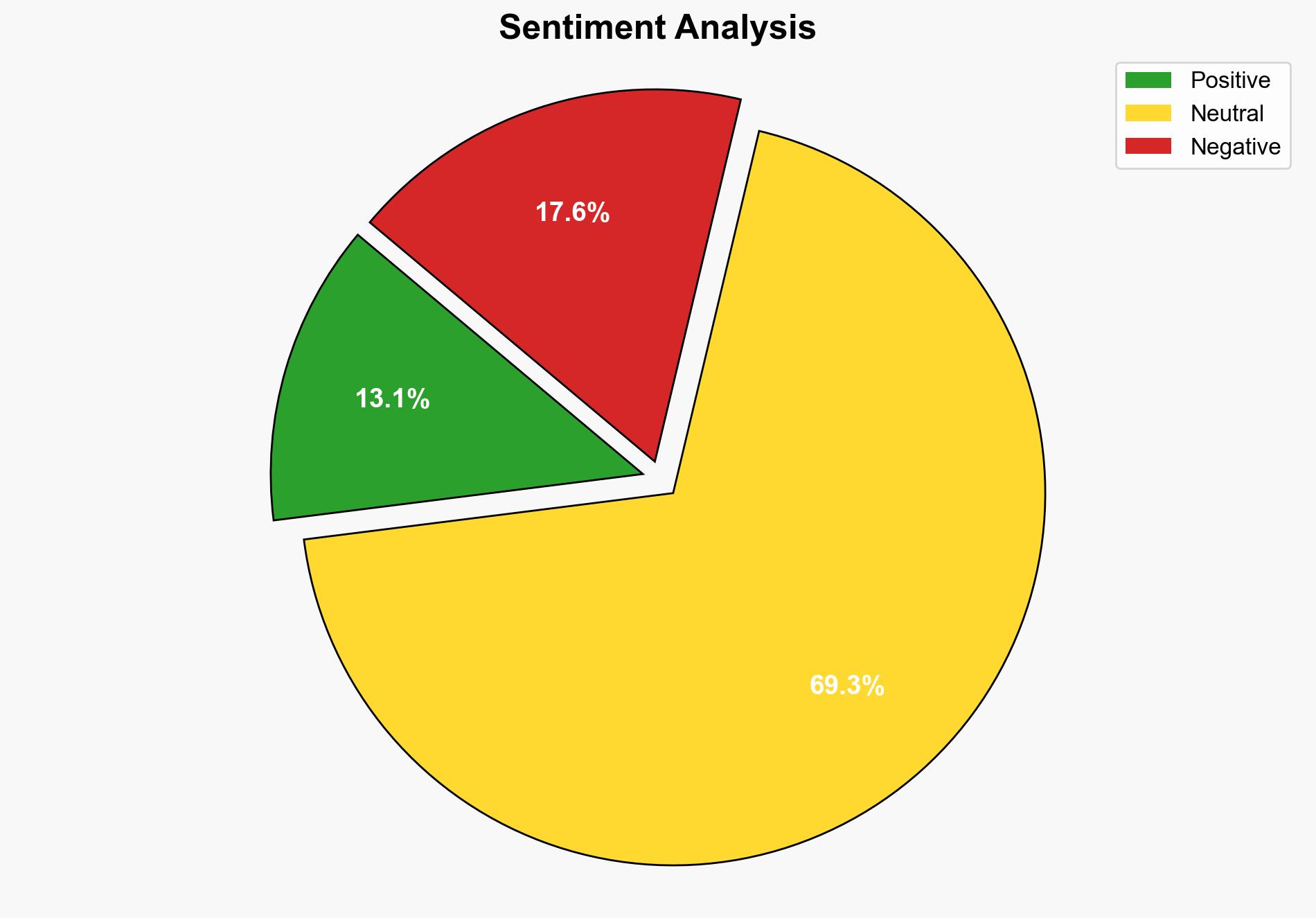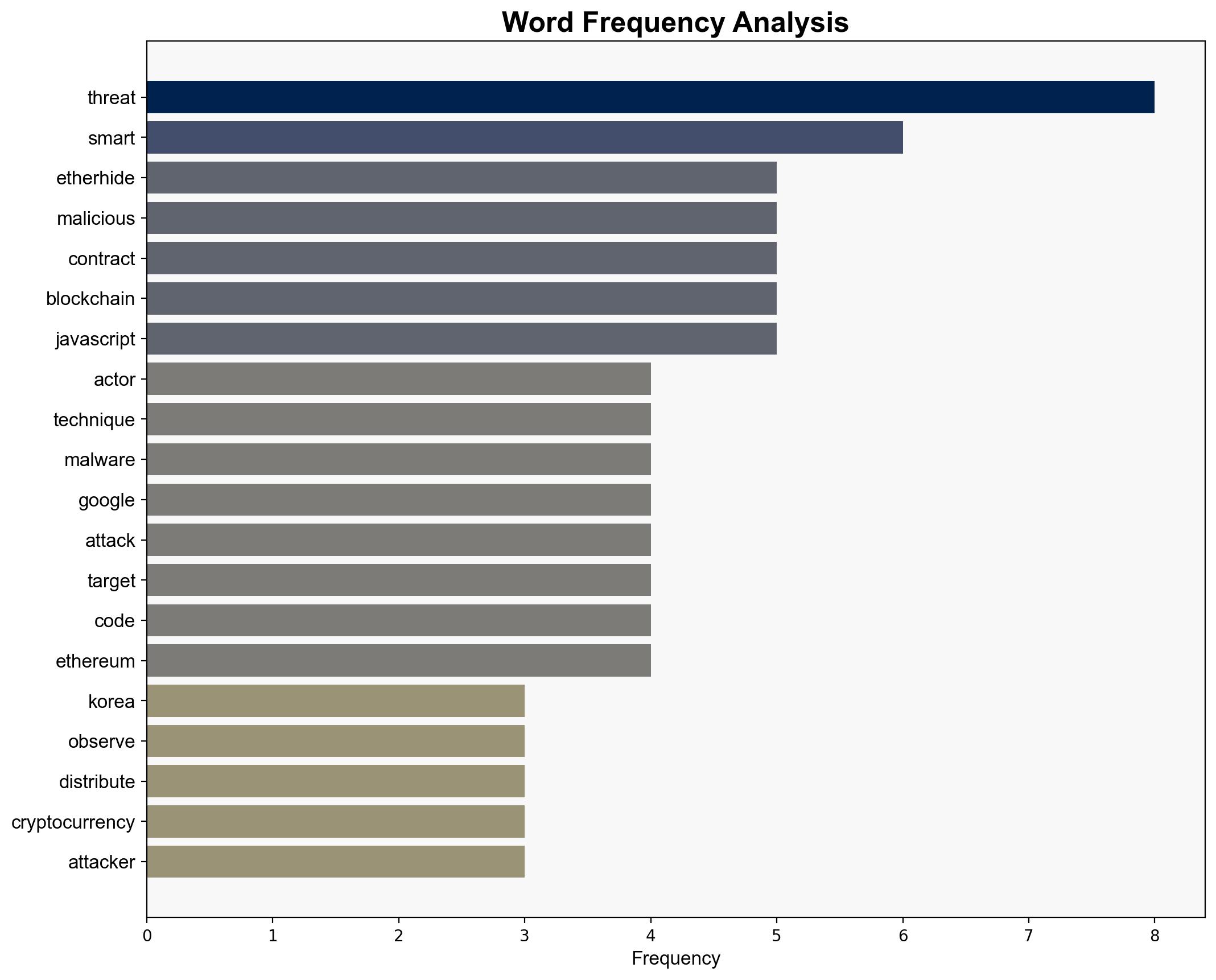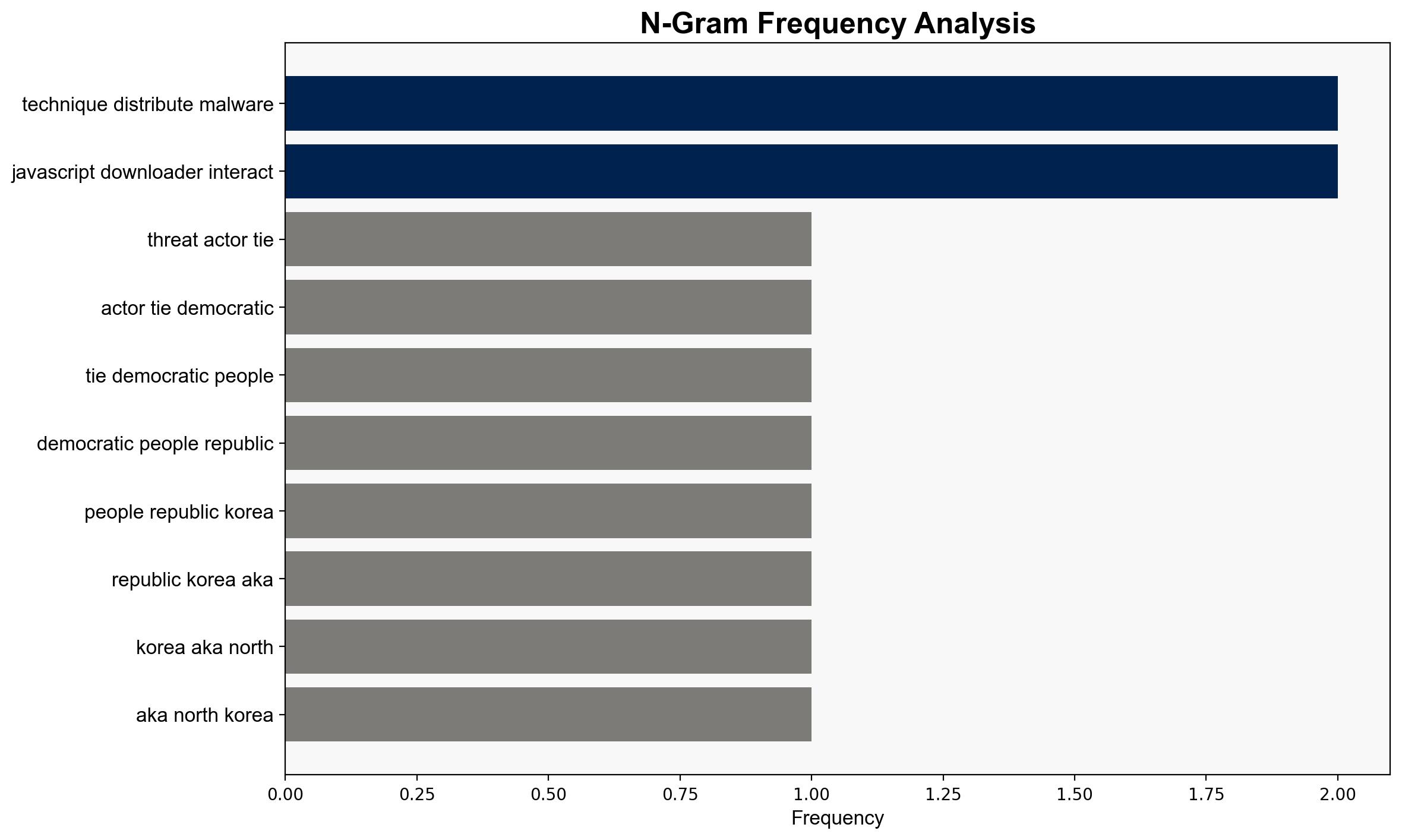North Korean Hackers Use EtherHiding to Hide Malware Inside Blockchain Smart Contracts – Internet
Published on: 2025-10-16
Intelligence Report: North Korean Hackers Use EtherHiding to Hide Malware Inside Blockchain Smart Contracts – Internet
1. BLUF (Bottom Line Up Front)
North Korean state-sponsored hackers are leveraging blockchain technology to distribute malware via smart contracts, a method known as EtherHiding. This technique complicates detection and takedown efforts, posing significant cybersecurity threats. The most supported hypothesis is that this represents a strategic evolution in North Korea’s cyber capabilities, aimed at both financial gain and cyber espionage. Confidence level: High. Recommended action: Enhance blockchain monitoring and develop countermeasures against smart contract-based malware.
2. Competing Hypotheses
Hypothesis 1: North Korean hackers are using EtherHiding primarily for financial gain through cryptocurrency theft. This hypothesis is supported by the consistent pattern of targeting cryptocurrency assets and the sophistication of the malware designed to exfiltrate wallet credentials.
Hypothesis 2: The primary objective of using EtherHiding is cyber espionage, with financial theft as a secondary goal. This is supported by the multi-stage infection chain capable of targeting various operating systems, suggesting a broader intent to infiltrate and gather intelligence from high-value targets.
Using Analysis of Competing Hypotheses (ACH), Hypothesis 1 is better supported due to the direct evidence of cryptocurrency theft and the historical pattern of North Korean cyber operations focusing on financial gain.
3. Key Assumptions and Red Flags
Assumptions include the belief that North Korea has the technical capability to develop and deploy such sophisticated malware. A red flag is the lack of direct attribution to North Korean actors beyond circumstantial evidence. There is also a potential bias in assuming financial motives based solely on past behavior without considering evolving strategic objectives.
4. Implications and Strategic Risks
The use of blockchain technology for malware distribution represents a significant escalation in cyber threat capabilities, potentially leading to more resilient and widespread cyber attacks. This could undermine trust in blockchain systems and complicate international efforts to regulate and secure cryptocurrency markets. Geopolitically, it signals an adaptive and persistent threat from North Korea, likely prompting increased cybersecurity measures globally.
5. Recommendations and Outlook
- Enhance international collaboration on blockchain security to detect and mitigate smart contract-based threats.
- Invest in research and development of tools to analyze and monitor blockchain transactions for malicious activity.
- Scenario Projections:
- Best Case: Development of effective countermeasures leads to a decline in successful attacks.
- Worst Case: Widespread adoption of EtherHiding by other threat actors, leading to a surge in cybercrime.
- Most Likely: Continued use of EtherHiding by North Korean actors, with incremental improvements in detection and response capabilities.
6. Key Individuals and Entities
Robert Wallace (consulting leader at Mandiant, Google Cloud) provided insights into the threat actor’s activities. No other individuals are explicitly named in the intelligence.
7. Thematic Tags
national security threats, cybersecurity, counter-terrorism, regional focus





